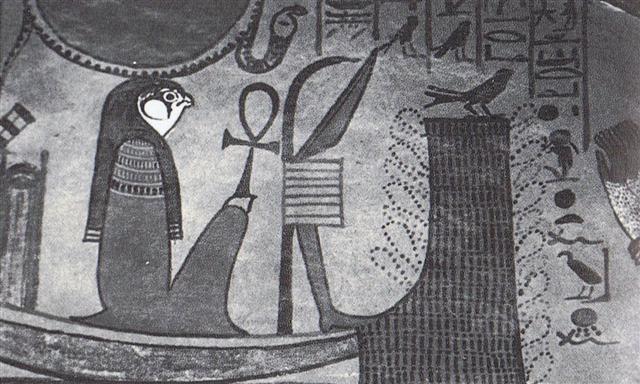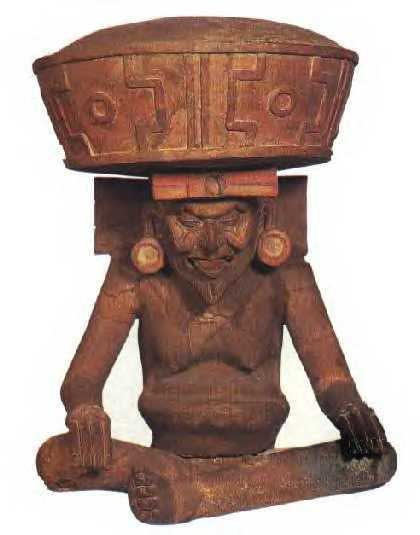|
584
17 The wheel of time gradually turned and the liquid in the spirit level would soon have totally emptied itself (been swallowed), viz. for instance a quarter of a year later.
The vertical direction determined by the plumb bob at the great Canopus (*95), located south of the equator, corresponded to the vertical direction of the thong down from the tiny Fox at the top to Spica in the middle. With Dramasa (*320) as the tiny star at the very bottom.
They surely should correspond to each other, for *320 (Dramasa → Spica + 118) - *95 (Canopus) = *225 → day 225 at August 13.(= 107 + 118). ... December 13 is evidently a date in harmony with the date of August 13, when according to the Mayas our present world had been created. In contrast to August 14 when Samsonov (the Son of Samson) struggled to survive in the marshes of Poland. Life (light) implies death (darkness) ... Once upon a time December had carried only 29 days and 13 + 16 = 29.
... The Arabs in the desert regarded it as a test of penetrating vision; and they were accustomed to oppose 'Suhel' to 'Suha' (Canopus to Alcor) as occupying respectively the highest and lowest posts in the celestial family. So that Vidit Alcor, et non lunam plenum, came to be a proverbial description of one keenly alive to trifles, but dull of apprehension for broad facts ... ... The Pythagoreans make Phaeton fall into Eridanus, burning part of its water, and glowing still at the time when the Argonauts passed by ...
Which seems to reveal how the key number 107 (→ 123 - 16) might have originated:
To be more explicit, the difference between 110 (at the back of the head of Ku) and 107 could be explained for instance as due to a shift from lunar to heliacal counting. Polaris was on the other side compared to Kochab.
.. About Carmenta we know from the historian Dionysus Periergetis that she gave orcales to Hercules and lived to the age of 110 years. 110 was a canonical number, the ideal age which every Egyptian wished to reach and the age at which, for example, the patriarch Joseph died. The 110 years were made up of twenty-two Etruscan lustra of five years each; and 110 years composed the 'cycle' taken over from the Etruscans by the Romans. At the end of each cycle they corrected irregularities in the solar calendar by intercalation and held Secular Games ... The ancient Phoenician alphabet had 22 letters (→ 22 / 7 = π) and from theth (T) up to and including qoph (Q) there were 11:
If this alphabet corresponded to that half (2π / 2) when the Sun was at the other side, then we could perceive 11 letters as a quarter of the whole cycle.
... Väinämöinen set about building a boat, but when it came to the prow and the stern, he found he needed three words in his rune that he did not know, however he sought for them. In vain he looked on the heads of the swallows, on the necks of the swans, on the backs of the geese, under the tongues of the reindeer. He found a number of words, but not those he needed. Then he thought of seeking them in the realm of Death, Tuonela, but in vain. He escaped back to the world of the living only thanks to his potent magic. He was still missing his three runes. He was then told by a shepherd to search in the mouth of Antero Vipunen, the giant ogre. The road, he was told, went over swords and sharpened axes. Ilmarinen made shoes, shirt and gloves of iron for him, but warned him that he would find the great Vipunen dead. Nevertheless, the hero went. The giant lay underground, and trees grew over his head. Väinämöinen found his way to the giant's mouth, and planted his iron staff in it. The giant awoke and suddenly opened his huge mouth. Väinämöinen slipped into it and was swallowed. As soon as he reached the enormous stomach, he thought of getting out. He built himself a raft and floated on it up and down inside the giant. The giant felt tickled and told him in many and no uncertain words where he might go, but he did not yield any runes. Then Väinämöinen built a smithy and began to hammer his iron on an anvil, torturing the entrails of Vipunen, who howled out magic songs to curse him away. But Väinämöinen said, thank you, he was very comfortable and would not go unless he got the secret words. Then Vipunen at last unlocked the treasure of his powerful runes. Many days and nights he sang, and the sun and the moon and the waves of the sea and the waterfalls stood still to hear him. Väinämöinen treasured them all and finally agreed to come out. Vipunen opened his great jaws, and the hero issued forth to go and build his boat at last ... ... In China, every year about the beginning of April, certain officials called Sz'hüen used of old to go about the country armed with wooden clappers. Their business was to summon the people and command them to put out every fire. This was the beginning of the season called Han-shih-tsieh, or 'eating of cold food'. For three days all household fires remained extinct as a preparation for the solemn renewal of the fire, which took place on the fifth or sixth day after the winter solstice ...
|
||||||||||||||||||||||||||||||||||||||||||||||||||||||||||||||||||||||||||||||||










